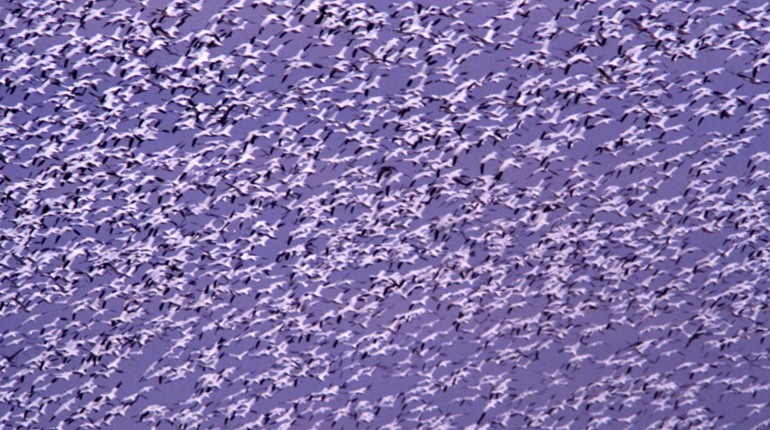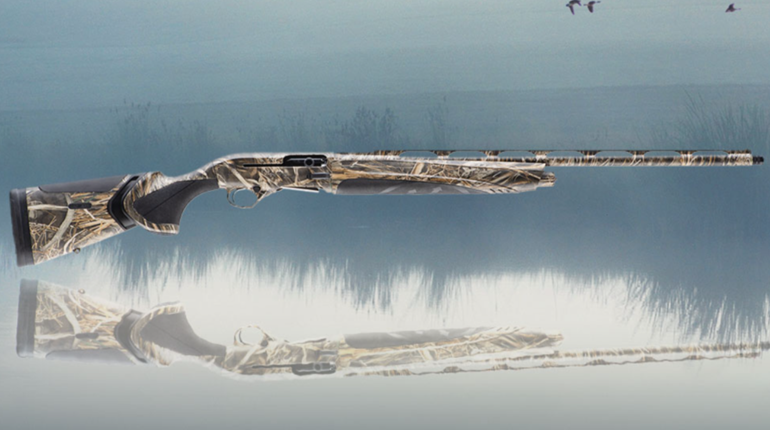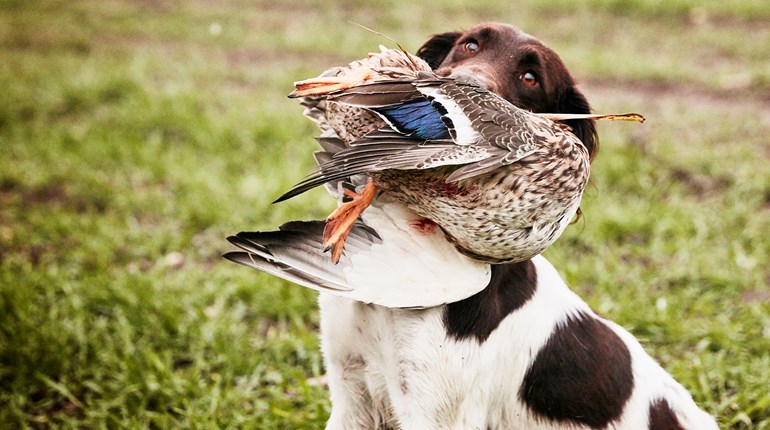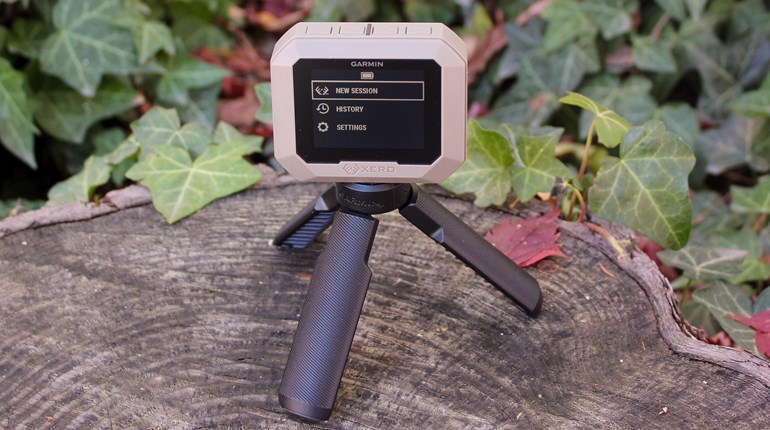
How many times have you spotted a whitetail buck slipping through the woods by the flash of his bone-white antlers hitting a beam of sunlight? Or walked by a shaded bush and never noticed a rabbit or pheasant until it darted out behind you? Fact is, highlights and shadows figure into hunter success on any bright day, because they either enhance or impede visibility.
While all hunters have to contend with direct sunlight and the resulting shadows, both in spotting game and hiding from it, none have to plan their hunts around them more than waterfowl hunters. Because sunlight reveals detail and attracts attention, they have to set their decoys where the sun will light them at prime flying time. Shadows are a bit more complicated: Whereas they can help conceal hunters, geometric and unnatural ones can also alert ducks and geese to layout blinds and pit-blind openings. They can make a full-body goose spread look inert and suspicious. If you’ve had plenty of promising hunts screech to a halt as soon as the sun crests the horizon, you know how debilitating shadows can be.
Whether you’re hunting ducks in a timber hole or honkers in a field, the more attention you pay to working the shadows and sunlight—to improve hunter concealment and enhance decoy visibility—the more successful you’re going to be.
There’s a reason expert duck and goose hunters love bright, clear mornings, not dark overcast days like many folks believe are the optimal conditions. Flat, overcast light makes it easier for birds to spot hunters and, due to the lack of contrast, harder for them to see the decoys from great distances. But direct sunlight comes with a price, which makes managing its effect on your blinds and decoys imperative.
Making Shadows Work in Your Favor
Kelley Powers, World Goose Calling Champion of Champions and owner of Power Calls, meticulously plans his duck and goose hunts around shadows and believes most hunters fail because they don’t.
“Anytime you can set up in the shade, you’re going to be invisible on a sunny day. If you’re duck hunting in timber holes or in sloughs with tree lines, use the trees to your advantage and set up where you’ll fall into shade as soon as the sun comes up. When the wind lines up and you’re goose hunting in a field with little cover, use fencerows and short tree lines to keep you hidden. As long as you can’t feel the heat of the sun, you’re okay. Set up where you can feel the sun and you have to be perfectly concealed to remain undetected, including covering your face and hands and making sure you move only when the birds are facing away or when you’re ready to shoot.”
So how do you plan your hunt around shade when you have to factor in wind direction? Like treestand hunting for deer, it’s always good to have options based on wind direction, especially if you’re hunting from fixed or permanent blinds. Since the predominant wind in most parts of the country is westerly, setting up on the north side of an east-west tree line will give you the greatest advantage, since the ducks can approach the decoys parallel to the tree line, and the sun at that time of year is arcing in a southerly path. For days when cold fronts or south winds dominate, north-south-running timber or windrows will at least allow you to blend into a high backdrop, with the west side obviously preferable shadow-wise.
Mobile hunters have more options and can set up wherever the wind aligns with the shaded cover. In general, waterfowl will feel more comfortable landing parallel to a fencerow or brush line than into it, but when the cover is relatively short, like where a stubble field meets tall grass, birds rarely shy away. And if you’re going to be prone, like hunting out of a layout blind, it doesn’t take much cover to cast a long shadow in which to hide. Hunters unsure of where the sun is going to rise and move through the sky can use cell-phone photographers’ apps like Sun Seeker to help them chose a location. These apps will show you the sun’s arc on any given day, in any given location.

Not All Shadows Are Equal
Field hunters who set up away from the edges know all too well how quickly a hunt can go south as soon as the rising sun hits their blinds. When layout blinds first came out you could plop them down in a field, even one with sparse cover, and limit out day after day with little regard for blending in. Those days are long gone, and meticulously stubbling them is not going to hide you unless you mitigate those long, geometric shadows that occur during the first few hours of direct sunlight. (As the suns gets higher, shadows will shorten and become insignificant.)
You can help yourself a lot by using low-profile blinds. You may have to lie flatter to the ground and be in better shape to sit up into shooting position, but their shadows will be much easier to remedy than those from taller blinds. If you’re lucky enough to hunt a cornfield with plenty of stubble and stalks lying about, gather armfuls from around the field and pile enough along the sides and back of the blinds to where they form a gradually sloping apron. The farther away from the blinds’ sides these aprons extend, the less-defined shadow they’ll create. Western and Midwestern field hunters know the value of tumbleweeds. Waterfowl are used to seeing these bulky, round weeds out in the middle of pastures and harvested fields, and it takes only a few to hide each blind.
The less available the cover, the more creative you have to be with decoys and blind placement. Decoys placed tight to the sunny and shaded side of the blinds will help break up their linear shadows, and strategically placed decoys stacked in front will help conceal unnatural shadows from approaching flocks. Where possible, aligning blinds so the rising sun is directly behind them will also help control how much shadow a blind will cast, although the sun’s angle changes constantly early and late in the day.
Powers likes to set up in the back (or upwind side) of the spread so the geese are distracted by all the decoys in front of him. And where cover is scant, he likes to cluster blinds. Instead of having to conceal four separate hunters, for example, he’ll put two blinds side by side and brush them up so there are only two sources of shadows to control, not four. When cover is really scarce, sometimes the best remedy is to hunt only a few hunters at a time and swap out as limits are filled.
Layout-blind hunters aren’t the only ones who need to conceal geometric shadows, as hunters who use pits, boat blinds or permanent blinds know. As the season wears on, and the vegetation or netting you use to cover your shooting holes wears down, it’s critical to replenish your camouflage, particularly since the birds will be warier from weeks of being hunted and shot at.
Years ago while working with Higdon Decoys, a company with which he’s still affiliated, Powers discovered a few more interesting things about shadows that can greatly affect hunter success. First, from greater distances and viewed from above, full-body decoys often blended into a field to where, just like live birds, they couldn’t be seen—not hard to understand considering Canada geese’s browns, grays and tans. What did show up were their shadows, all the more pronounced when the sun was low.
Visibility is what you want in decoys, so at face value their shadows are good. The bad part is how they compare to live geese. “If you’ve ever watched flocks of geese on the ground and from a high vantage, it looks like the ground is crawling,” says Powers. “With a high sun and shadows directly underneath them, the effect isn’t pronounced, but early and late in the day the shadows they cast are long and create a flickering effect that’s really noticeable.
“By comparison, when we looked at our spread of full-bodies from a bird’s-eye view, those same shadows didn’t dance around at all. In fact, they made the decoys look even more lifeless. That’s the idea behind Higdon’s Wobbler goose decoys and their stake system that generate lots of motion even in the slightest breeze.”
Lifeless decoys, thanks to static shadows, could be another reason why the first few hours of direct sunlight, before the sun rises high enough to significantly shorten decoy shadows, tend to produce fewer decoying birds. By contrast, overcast days and those moments before the sun comes out don’t produce much shadow and therefore don’t have the same issues.

Duck Decoy Placement
Since sunlight reveals detail and heightens visibility, it’s important to place your decoys where the sun will hit them during peak flight activity, which usually means the earliest moment possible. Shadows are a fact of life when hunting timber holes and breaks, but hunters who place a significant number of decoys where the sun first hits the water will have a substantial advantage.
“In lots of places you’ll hear hunters say, ‘It gets good here around 8.’ The reason why,” says Powers, “is that’s when the sun lights up part of the hole. Decoys disappear in shade, so they do you no good even when ducks fly straight overhead. If you want your decoys to have maximum drawing power, get them into the sun as early as possible. The most successful duck hunters always know where the sun is going to first touch the water, or will move decoys into those first rays of light if they’re not there already—even if it’s only a 10x10-foot patch of sunlight. That’s enough direct light for the decoys to do their job.
“We’ll even go so far as to place spinners on extended poles to get them as high as possible and lit by the first rays of sunlight penetrating the woods. That one move can turn high-flying flocks our way in an instant, ducks that would otherwise pass by. What hunters need to learn is how to overcome adverse decoying conditions. Yes, you want to hide in the shadows, but if your decoys are also in the shade, all the concealment in the world won’t help you. If the ducks can’t see your decoys, you’re toast.”





































